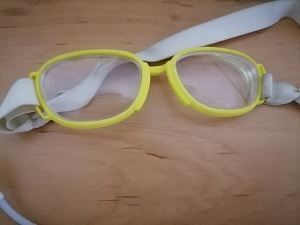Why No One Cares About Have Counterfeit Money Printed
Understanding the Risks and Legal Consequences of Counterfeit Money Production
In the age of digital deals and innovative security features, the production of counterfeit money stays a persistent problem that threatens economies internationally. Counterfeit money refers to currency that is produced without the authority of the federal government, designed to appear like legitimate legal tender. This article explores the methods used to produce counterfeit money, the legal implications for those who attempt to produce or distribute it, and the preventive procedures taken by governments and monetary institutions to fight this crime.
What is Counterfeit Money?
Counterfeit money is any currency that is produced with the intent to trick the recipient into thinking it is real. This can include bills, coins, or any other kind of currency. The procedure generally involves reproducing the appearance and functions of the genuine currency as carefully as possible to prevent detection.
Counterfeiters can differ widely in their resources, from people operating in basements with fundamental equipment to advanced criminal organizations employing high-tech equipment and approaches. Understanding these approaches is critical in acknowledging and Online Falschgeld Kaufen Ohne Risiko avoiding counterfeiting.
Techniques Used to Counterfeit Money
Counterfeit money can be produced through numerous different techniques, consisting of:
Digital Printing: With the advent of high-quality printers and digital modifying software, counterfeiters can create highly persuading fake currency. These methods frequently involve scanning legitimate currency and utilizing editing programs to control the images.
Offset Printing: This conventional printing method can produce multi-colored bills and is frequently utilized for massive operations. It requires customized equipment and knowledge of printing.
Paper Composition: Genuine currency is printed on a particular kind of paper, often embedded with numerous security functions. Counterfeiters may attempt to simulate this paper or produce their own that closely resembles it.
Stencils and Handcrafting: Less sophisticated counterfeiters might turn to utilizing stencils or perhaps hand-drawing fake currency. While these approaches are typically less reliable, they can still fool some untrained eyes.
The Legal Consequences of Counterfeiting
Counterfeiting is a severe crime in most countries, thought about a type of fraud. The legal consequences are extreme and typically consist of substantial fines and prison time. The specifics can vary by jurisdiction, however common penalties include:
Fines: Counterfeiters can deal with fines that total up to numerous times the value of the counterfeit currency they produced or dispersed.Prison Time: Convictions can cause prolonged sentences, typically exceeding five years for major offenses.Restitution: Offenders may likewise be required to pay restitution to victims or the federal government.Rap sheet: A conviction can lead to a lasting rap sheet, affecting work chances and travel.
Federal governments worldwide employ various techniques to combat counterfeit currency. These techniques typically consist of improving currency security features, informing the general public, and imposing stringent charges for those caught producing counterfeit money.
Functions of Legitimate Currency
Understanding the qualities of legitimate currency can assist people spot counterfeit money. Standard functions include:
Watermarks: Most genuine currencies have watermarks noticeable when held up to the light.Security Threads: Embedded threads within the paper that can be seen when held at an angle.Color-Shifting Ink: Ink that changes color when viewed from various angles.Microprinting: Small text that is hard to reproduce and is frequently included in numerous areas of the bill.Preventative Measures Against Counterfeiting
Federal governments and financial organizations constantly improve their methods of securing versus counterfeit money. Here are some typical avoidance methods:
Enhanced Security Features: Newly printed currency frequently includes advanced security features that are hard for counterfeiters to duplicate.
Public Education: Governments educate the public on how to recognize counterfeit money, assisting individuals to end up being more critical when accepting currency.
Advanced Technology: Law enforcement agencies use innovation, such as ultraviolet light scanners and software application that can immediately spot counterfeit costs.
International Cooperation: Counterfeiting is a worldwide problem, and many nations work together to fight it. This consists of sharing info about counterfeit operations and best practices for prevention.
What to Do if You Encounter Counterfeit Money
If a private suspects they have received counterfeit money, it is vital to act quickly and properly. Here are actions to follow:
Do Not Spend It: Attempting to utilize counterfeit money can cause legal trouble.Take a look at the Currency: Use fundamental strategies, such as inspecting for watermarks and security functions.Inform Authorities: Report the incident to local police or the appropriate monetary authority in your location.Regularly Asked Questions (FAQs)
1. What are the penalties for using counterfeit money?
Charges can vary commonly, however people caught using counterfeit money can deal with significant fines, restitution, and imprisonment.
2. How can I identify counterfeit money?
Search for watermarks, security threads, color-shifting ink, and microprinting. When in doubt, compare suspicious expenses to known authentic currency.
3. What should I do if I receive counterfeit money?
Do not try to utilize it. Examine the bill and report it to the authorities.
4. Can counterfeit money be printed at home?
While it is technically possible to print money in the house utilizing high-quality printers and digital tools, it is unlawful and can lead to serious legal repercussions.
Counterfeit money is not simply an annoyance; it is a severe criminal activity with considerable effects for individuals and economies alike. Comprehending the approaches of production, recognizing the charges, and knowing how to determine counterfeit currency are important in combating this problem. As innovation advances, so too do the methods used by counterfeiters. Remaining notified and vigilant is important in keeping the integrity of financial systems globally.

